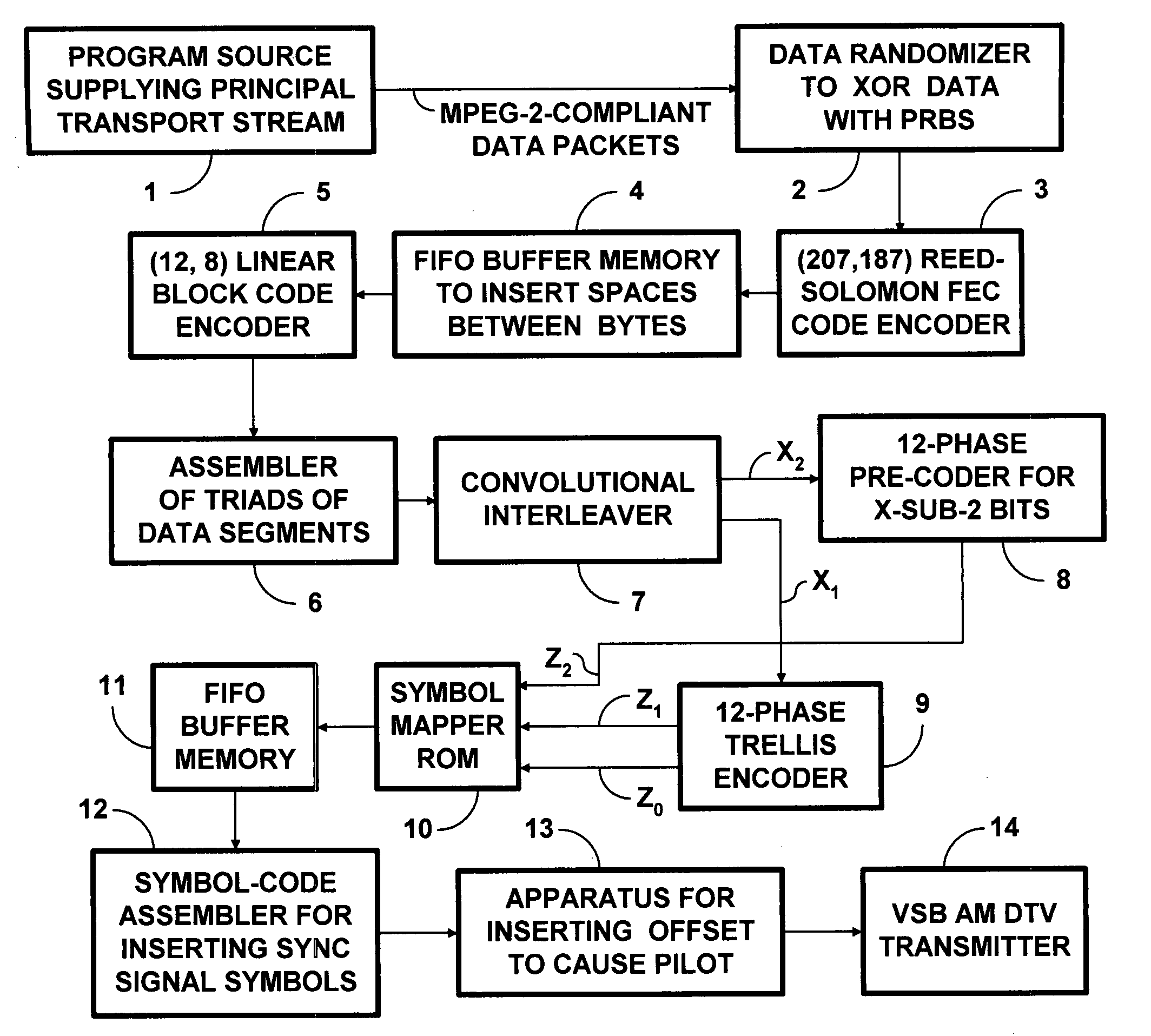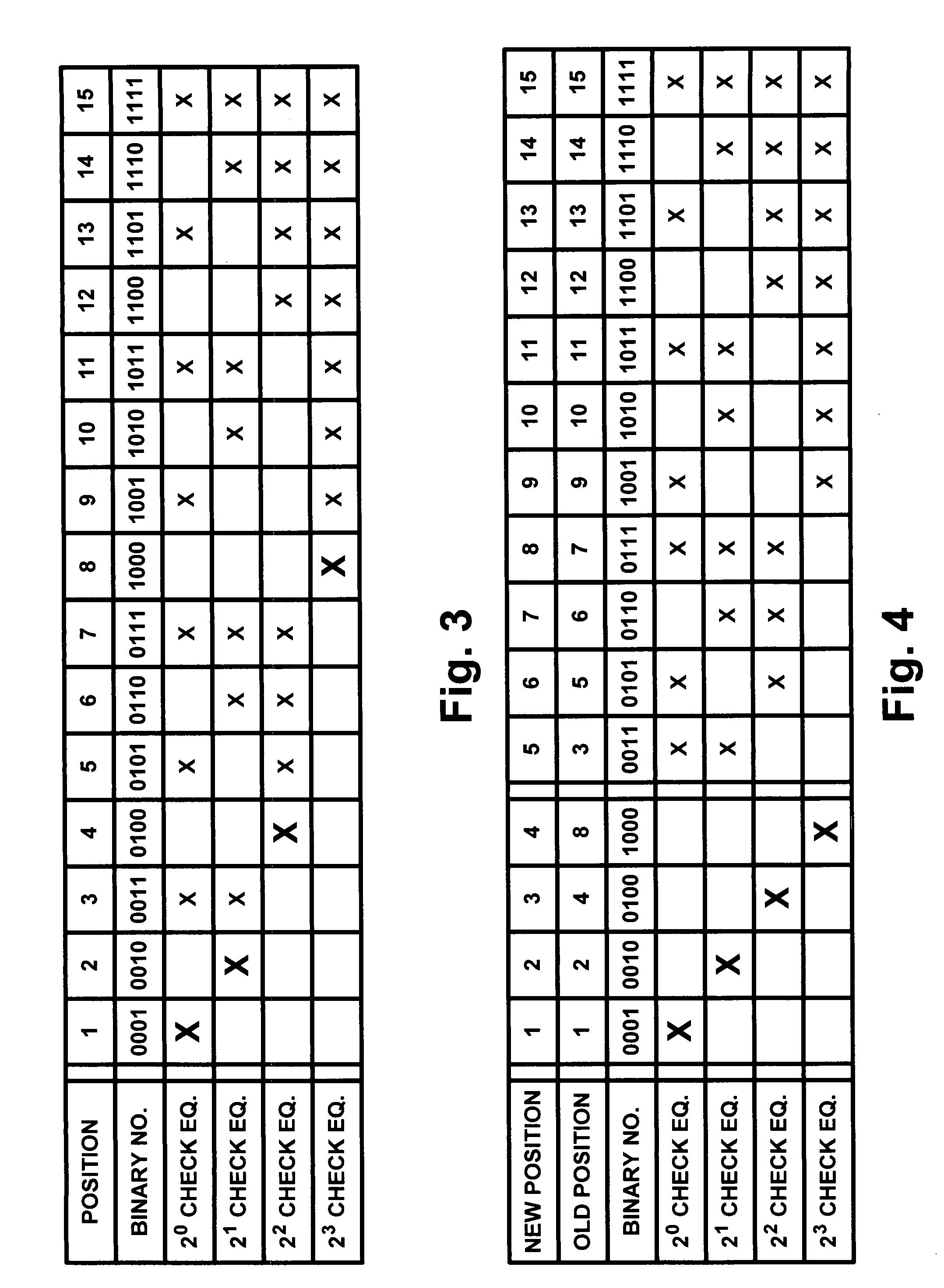Robust DTV signals transmitted at two thirds the code rate of ordinary 8VSB DTV signals
a dtv signal and code rate technology, applied in the direction of amplitude demodulation, pulse technique, line-fault/interference reduction, etc., can solve the problems of reducing the information code rate, reducing the overhead cost of the approach, and so on, so on to achieve the effect of reducing the code rate and more robust reception
- Summary
- Abstract
- Description
- Claims
- Application Information
AI Technical Summary
Problems solved by technology
Method used
Image
Examples
Embodiment Construction
[0030]FIG. 1 shows DTV transmitter apparatus for (12, 8) linear block coding DTV signals for subsequent transmission at two-thirds the code rate of ordinary 8VSB signals. In FIG. 1 a program source 1 of a principal transport stream is connected to supply the successive 187-byte data packets in that transport stream to a data randomizer 2. The principal transport stream comprises a succession of MPEG-2-compliant data packets descriptive of an HDTV signal or, alternatively, two or possibly three SDTV signals. The data randomizer 2 is operated for randomizing the bits in those data packets by exclusive-ORing those bits with the bits of a 216-bit maximal length pseudo-random binary sequence (PRBS). The PRBS, which is initialized at the beginning of each data field, is that specified in A / 53, Annex D, §§ 4.2.2 titled “Data randomizer”. The portion of the PRBS used in exclusive-ORing each data segment is that portion which is suitable for the location of that data segment in the non-inter...
PUM
 Login to View More
Login to View More Abstract
Description
Claims
Application Information
 Login to View More
Login to View More - R&D
- Intellectual Property
- Life Sciences
- Materials
- Tech Scout
- Unparalleled Data Quality
- Higher Quality Content
- 60% Fewer Hallucinations
Browse by: Latest US Patents, China's latest patents, Technical Efficacy Thesaurus, Application Domain, Technology Topic, Popular Technical Reports.
© 2025 PatSnap. All rights reserved.Legal|Privacy policy|Modern Slavery Act Transparency Statement|Sitemap|About US| Contact US: help@patsnap.com



